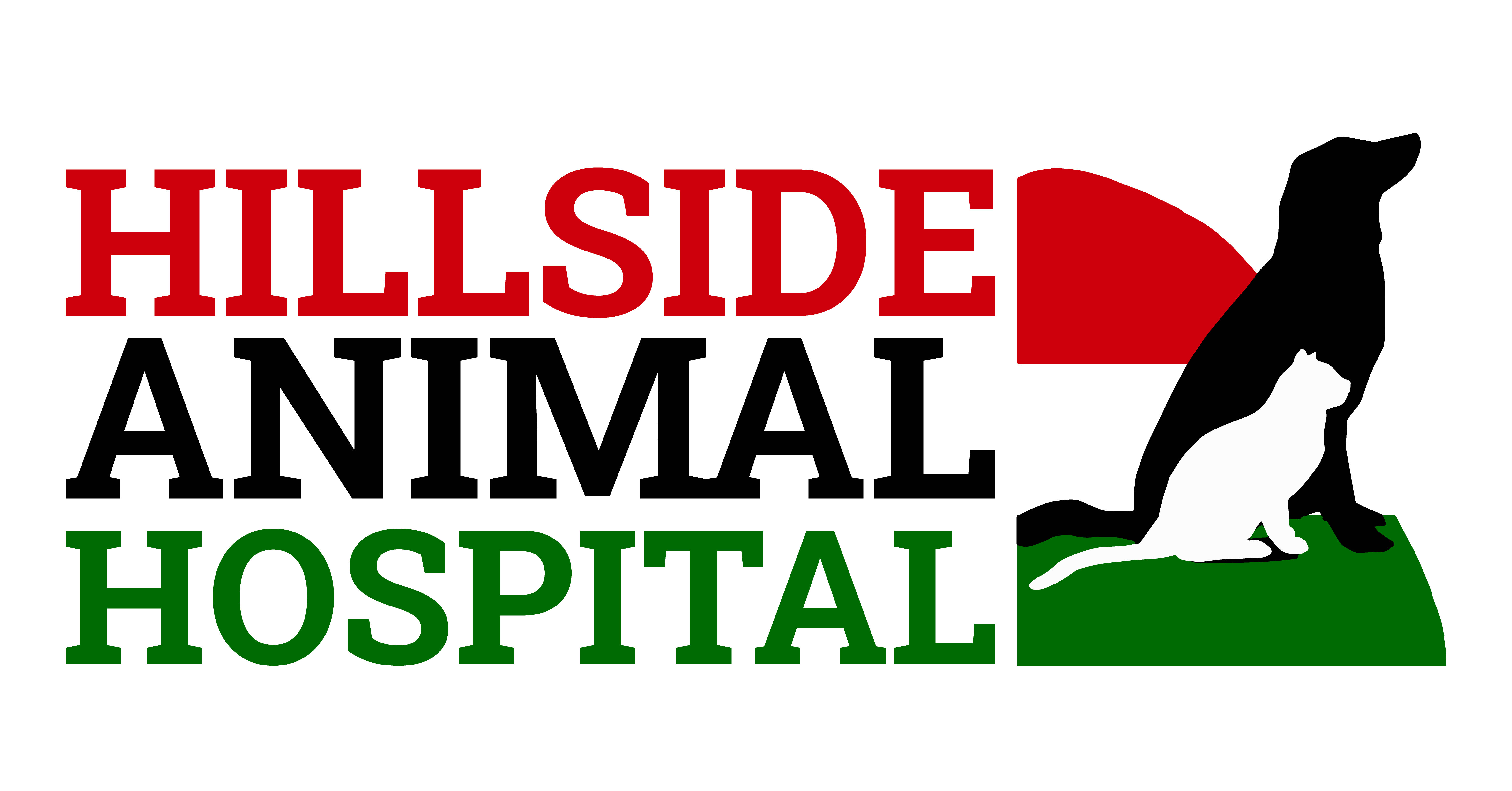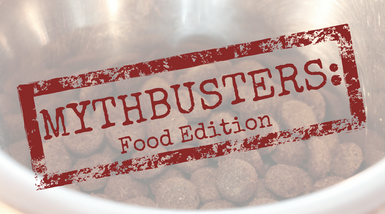Myth: The Ingredient list is the best way to pick pet food.
BUSTED: While it is tempting to buy pet food with a lot of fancy ingredients, you must remember that animals need nutrients not ingredients. Nutrients are the vitamins and minerals that are vital to your pet’s health. Ingredients are also listed by weight with the heaviest ingredients at the top and lighter ones on the bottom. This often includes water content in fresh meat and vegetables. This means that these watered-down ingredients may contribute fewer nutrients even though they make up a larger portion of the diet. Your best bet for picking a diet is to look for an AAFCO (The Association of American Feed Control Officials) Seal and to choose a diet that was tested by “Feeding Trial”. This is the gold standard of nutrition testing and means that it not only follows AAFCO diet formulation guidelines, but also was fed to groups of animals and deemed safe to consume.
Myth: By-Products are unhealthy and shouldn’t be fed to my pet.
BUSTED: When pet owners think of by-products they think of the worst possible things imaginable, such as feet, hair, horn, snouts, tumors, feces, and feathers. The truth is none of these things make it into your pet’s food! What is really in animal by-products are organ meat, blood, and sometimes ground bone. To most owners, these still sound like disgusting items, but to your pet, they are both delicious and nutritious. They provide vitamins, minerals, and other nutrients vital to your pet’s health. Also, you may be eating by-products already and not realizing it if you eat anything with gelatin (which comes from cow collagen). So remember, “There’s always room for cow collagen”! (Not as catchy as the original, but more accurate).
Myth: Corn is bad for my pet and is just filler.
BUSTED: Corn has become one of the most persecuted grains (not the G-word! more on that later) in pet foods and it is time to stand up for this amazing little guy! First of all, the filler is defined as something added that has no purpose or in the case of food no nutritional value. This is far from true! Corn is actually a highly digestible grain (Oh, there it is again!) that is a great source of protein, fat, and fiber. Also when corn is harvested for pet food the healthiest part of the kernel goes into…. your pet’s food and humans are left with the syrupy substance known as high fructose corn syrup.
Myth: Grains are bad for animals.
BUSTED: As I alluded to in the previous myth, grains also receive a bad rap. Owners often believe they are just filler or cause allergies. While some grains may cause allergies, it isn’t as common as allergies to protein sources. Proteins are large molecules and in some animals, it can trigger an allergic reaction. Grains can be a nutritious part of your pet’s diet. Does that mean grain-free diets are bad? No, they just have to be fed with caution since they are often higher in fat and can cause weight gain.
Myth: If a pet food label says it has chicken/beef, etc… the majority of the diet has that protein source.
PLAUSIBLE: When it comes to pet food labels you often have to read them very carefully since the wording makes all of the difference as to the percentage of a protein source is actually in a diet. Hopefully, this guide will help to show how much protein is really in your pet’s diet.
Chicken, Beef, Lamb…etc…
If a package says Chicken, Beef, or any other protein source it must contain at least 70% or more of that protein source. This is on an as fed basis once water is removed from that protein source.
Chicken, Beef, Lamb…etc.. “Dinner”
These foods will have 25% or more of that protein source and water is included when weighing that protein source before it is added.
Chicken, Beef, Lamb…etc…. “Platter” or “Entree”
These foods will have at least 3% of the labeled protein source.
Chicken, Beef, Lamb…etc….”Flavor”
These foods will have less than 3% of the labeled protein source.
Myth: I should feed an organic, natural, holistic diet
PLAUSIBLE: Of the three words I just used, only two really carry a legal definition. Organic diets meet regulations established by the USDA to certify them organic. Natural diets are diets made without any synthesized ingredients meaning all of the ingredients come from nature. Holistic, on the other hand, has no legal definition. The same goes for labels such as “Human-grade” and “Premium”. These are all marketing terms. Before you let that get you down, remember you can use these for anything! You can drive to work in your “premium” car that you filled with “holistic” gas.
I hope that these myths help educate, inform, and entertain. It is getting harder and harder to select the proper diet for pets with all of the growing numbers of new diets added to the diets that are already on the market. I hope this was a fun and easy way to learn about proper diet selection and as always feel free to call the clinic. I also hope we can do more “Mythbuster” segments in the future and look forward to any and all suggestions! Until then have a “premium” day!
– Matthew Lang R.V.T.

